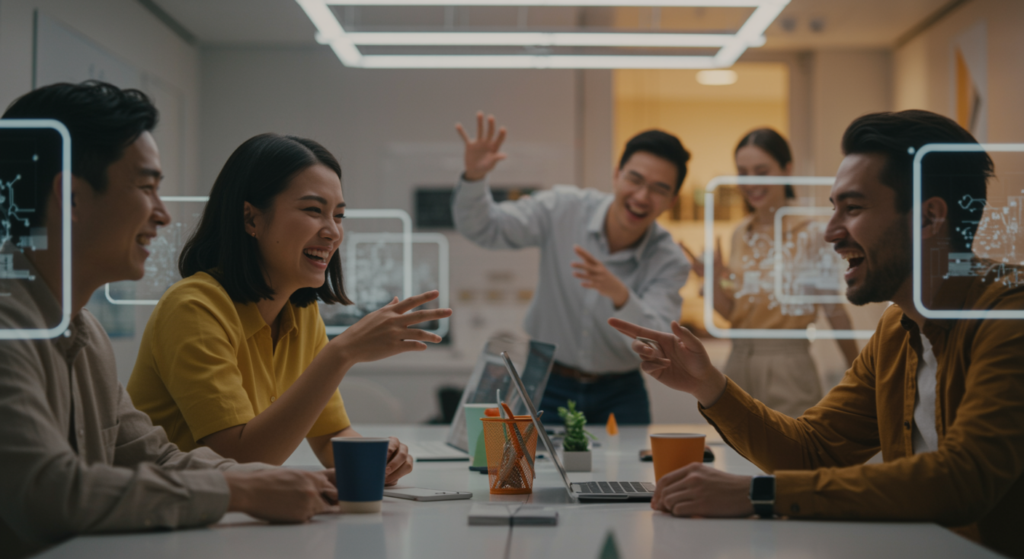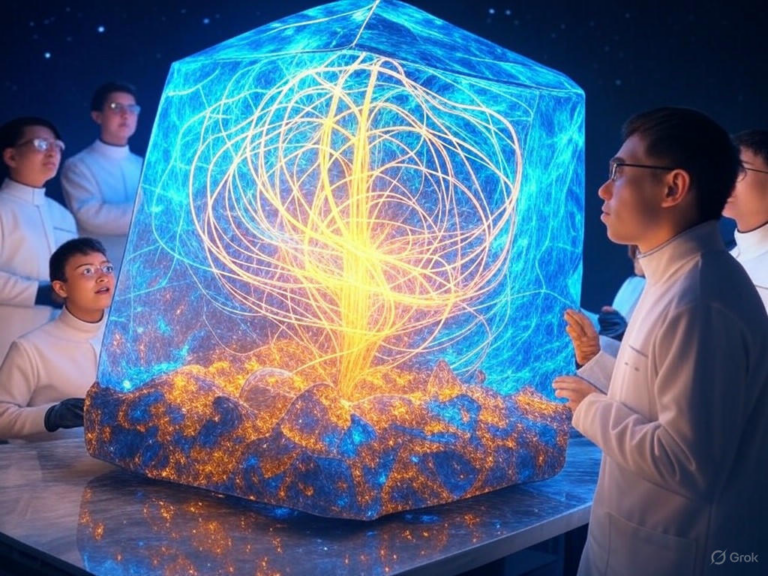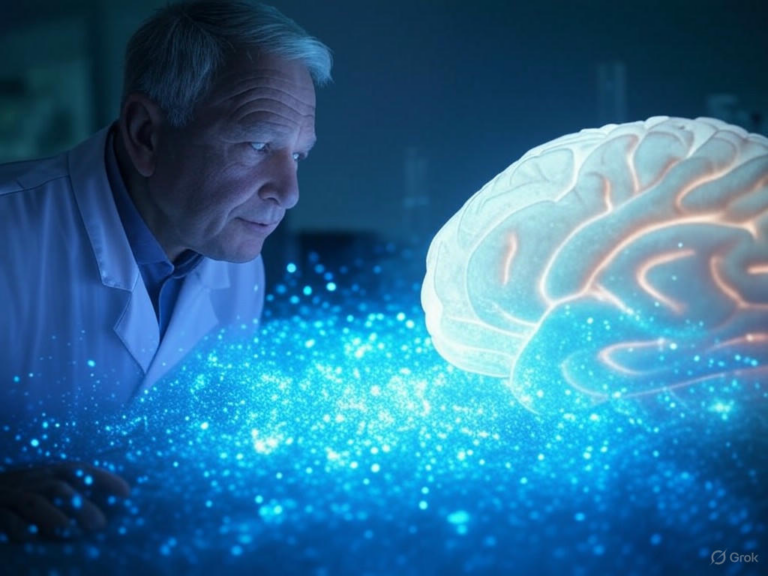
AI’s Impact on Office Social Behavior: Microsoft Warns of Anti-Social Trends
The Double-Edged Sword: How AI is Reshaping Office Dynamics
As artificial intelligence transforms the modern workplace, workplace AI impact is becoming a critical topic of discussion. Microsoft’s recent research, conducted in collaboration with Carnegie Mellon University, highlights how generative AI tools are influencing employee behavior and cognitive abilities, potentially leading to reduced critical thinking and weaker social connections [5]. This shift is evident as companies integrate AI solutions like Microsoft’s Copilot, which boosts productivity but raises questions about long-term effects on office interactions.
With AI adoption accelerating globally, the benefits of enhanced efficiency are clear, yet they come with risks to traditional workplace dynamics. For instance, employees might rely heavily on AI for routine tasks, inadvertently diminishing the spontaneous collaborations that foster team spirit [5][7]. Have you noticed how tools designed to streamline work can sometimes make us feel more isolated?
Workplace AI Impact on Critical Thinking: A Growing Concern
In a comprehensive study from April 2025, Microsoft surveyed 319 knowledge workers and uncovered alarming trends in how AI usage affects cognitive skills. The findings suggest that overreliance on AI could lead to a deterioration of critical thinking, especially when workers trust AI outputs without much verification [4][5].
This workplace AI impact is particularly noticeable in everyday tasks, where employees might skip their own analysis, assuming the technology has it covered. Similar to how smartphones have shortened attention spans, AI tools could be conditioning us to engage less deeply with our work [5]. Imagine a scenario where a team member uses AI to draft reports but fails to catch subtle errors—could this erode the problem-solving skills we value in a dynamic office?
The Automation Paradox in Workplace AI Dynamics
Microsoft’s research draws from earlier studies on automation, showing that when workers lose opportunities to exercise judgment, their cognitive abilities can atrophy over time [5]. This creates an ironic twist: AI is meant to free up time for creative pursuits, but it might weaken the very skills needed for innovation [7].
To counter this, organizations could encourage regular “AI-free” brainstorming sessions, where teams rely on human insight alone. By doing so, we maintain a balance that keeps critical thinking sharp amidst the workplace AI impact.
The Social Impact: Fostering Connection in Flexible Work Settings
Beyond cognition, workplace AI impact extends to social behavior, with Microsoft’s Work Trend Index revealing that 70% of employees crave flexible remote options, yet 66% of leaders are rethinking office designs for hybrid models [3]. This push for flexibility, while beneficial, can exacerbate feelings of isolation, as remote work limits those impromptu chats that build relationships.
In hybrid environments, AI tools are stepping in to bridge gaps, but they can’t fully replace the warmth of face-to-face interactions. For example, a quick coffee break conversation might spark ideas that an AI-suggested meeting never could [3]. What steps can your team take to ensure technology enhances, rather than hinders, these connections?
Microsoft Places: Tackling Workplace AI Impact on Social Connectivity
Microsoft’s Places is an innovative AI-driven solution aimed at improving social ties in hybrid setups. It helps employees book spaces, schedule in-person meetups, and know who’s in the office, ultimately boosting collaboration opportunities [3].
As Nathalie D’Hers, Microsoft’s corporate vice president of Digital, notes, ‘We’re a fully hybrid company, and Places ensures our teams stay effective no matter where they work.’ By using such tools thoughtfully, companies can mitigate the workplace AI impact on social behavior, turning potential isolation into opportunities for meaningful engagement.
Balancing Human-AI Dynamics: Achieving the Right Equilibrium
Workplace AI impact underscores the need for a careful balance between automation and human involvement, as highlighted by Stanford’s research on AI-assisted work [5]. While AI can boost efficiency, overdependence risks diminishing our ability to think critically and connect with colleagues.
Microsoft’s Office of Responsible AI advocates for keeping humans central to these systems, ensuring technology supports rather than supplants our skills [1]. A simple strategy? Train teams to question AI suggestions regularly, fostering a culture where human judgment remains key.
The Psychology Behind Workplace AI Impact on Human Interaction
From a psychological standpoint, people often behave differently when interacting with AI versus humans, feeling less truly heard despite AI’s supportive responses [6]. This dynamic can amplify anti-social trends, as employees might opt for quick AI interactions over deeper human exchanges.
To address this, consider incorporating team-building activities that emphasize personal stories, helping to preserve the empathy and trust that AI can’t replicate [6]. It’s a reminder that while AI enhances productivity, its impact on workplace social behavior requires ongoing attention.
Transformative Potential: Leveraging AI in Business
Despite these challenges, the positive aspects of workplace AI impact are evident in how businesses are innovating. Microsoft has cataloged over 400 examples of AI driving real change, from enriching employee experiences to reinventing customer engagement [7].
For instance, AI can automate repetitive tasks, allowing staff to focus on creative projects, as seen in marketing teams that use it for personalized campaigns. Here’s a quick tip: When implementing AI, start small—pilot it in one department to gauge its effects on both productivity and team morale.
| Category | Impact |
|---|---|
| Enriching employee experiences | Streamlines mundane tasks, freeing time for innovative work |
| Reinventing customer engagement | Delivers tailored experiences while easing employee workloads |
| Reshaping business processes | Optimizes operations in areas like finance and marketing |
| Bending the curve on innovation | Speeds up product development and market entry |
Misinformation and Wider Social Consequences
Workplace AI impact isn’t limited to offices; it also involves broader risks like the spread of misinformation through AI “hallucinations,” where systems generate convincing but false information [6]. This can lead to issues such as polarized attitudes, eroded trust, and even influences on critical decisions like voting or health choices.
In a hypothetical scenario, an AI tool might produce inaccurate reports that affect team strategies, underscoring the need for verification. To combat this, always cross-check AI outputs with reliable sources—it’s a practical way to safeguard against these pitfalls [6].
Best Practices for Responsible AI Implementation
To harness AI’s advantages while minimizing its workplace AI impact, organizations should adopt targeted strategies. Start with maintaining human oversight, as Google does with AI-generated content, ensuring editors review outputs to uphold quality [8].
Focus on quality over quantity, prioritizing meaningful results rather than sheer volume. Additionally, encourage balanced AI use by setting clear guidelines that promote critical engagement [5].
Strategies to Mitigate Workplace AI Impact
One effective approach is creating spaces for social connection, like Microsoft’s Places, to nurture in-person interactions [3]. Actionable advice: Schedule regular hybrid events that blend AI tools with human elements, helping teams stay connected and engaged.
The Future of Work: Embracing Human-AI Collaboration
Looking ahead, the future hinges on thoughtful human-AI collaboration, with Microsoft’s insights guiding us to preserve critical thinking and social bonds [4][5]. By designing AI systems that prioritize human needs, we can avoid anti-social trends and enhance overall workplace experiences [1].
For social impact organizations, AI offers ways to scale services, but only if implemented with a focus on maintaining human connections [2]. A brief anecdote: Think of a nonprofit using AI for data analysis while still relying on staff stories to drive empathy-driven campaigns.
Embracing Responsible AI in the Workplace
Microsoft’s responsible AI framework emphasizes putting people first, ensuring technology amplifies rather than diminishes our capabilities [1]. This human-centered approach is key to navigating workplace AI impact successfully.
Conclusion: Balancing Progress with Preservation
In summary, workplace AI impact presents both opportunities and warnings, as Microsoft’s research shows. By staying vigilant and implementing best practices, we can leverage AI to improve office dynamics without sacrificing social behavior or critical skills [4][5][7].
What are your experiences with AI in your workplace? I’d love to hear your thoughts in the comments below, or explore more on how to balance tech and humanity in our related posts. Let’s keep the conversation going!
References
- [1] Microsoft. “Corporate Responsibility: AI.” Microsoft AI Responsibility.
- [2] Microsoft. “How Social Impact Organizations Can Leverage AI.” Microsoft Cloud Blog.
- [3] Microsoft. “Enhancing Hybrid Work with AI.” Inside Track Blog.
- [4] Microsoft Research. “The Impact of Generative AI on Critical Thinking.” Microsoft Research Publication.
- [5] ITPro. “AI Tools and Critical Thinking Reliance.” ITPro Article.
- [6] PMC. “Human-AI Interaction and Social Consequences.” PMC Article.
- [7] Microsoft. “How Real-World Businesses Are Transforming with AI.” Microsoft Blog.
- [8] OVRDRV. “SEO Techniques for AI-Generated Content.” OVRDRV Blog.
,workplace AI impact,Microsoft AI research,AI social impact,critical thinking skills,hybrid work environments,AI workplace dynamics,office social behavior,AI cognitive effects,responsible AI implementation,AI human collaboration







